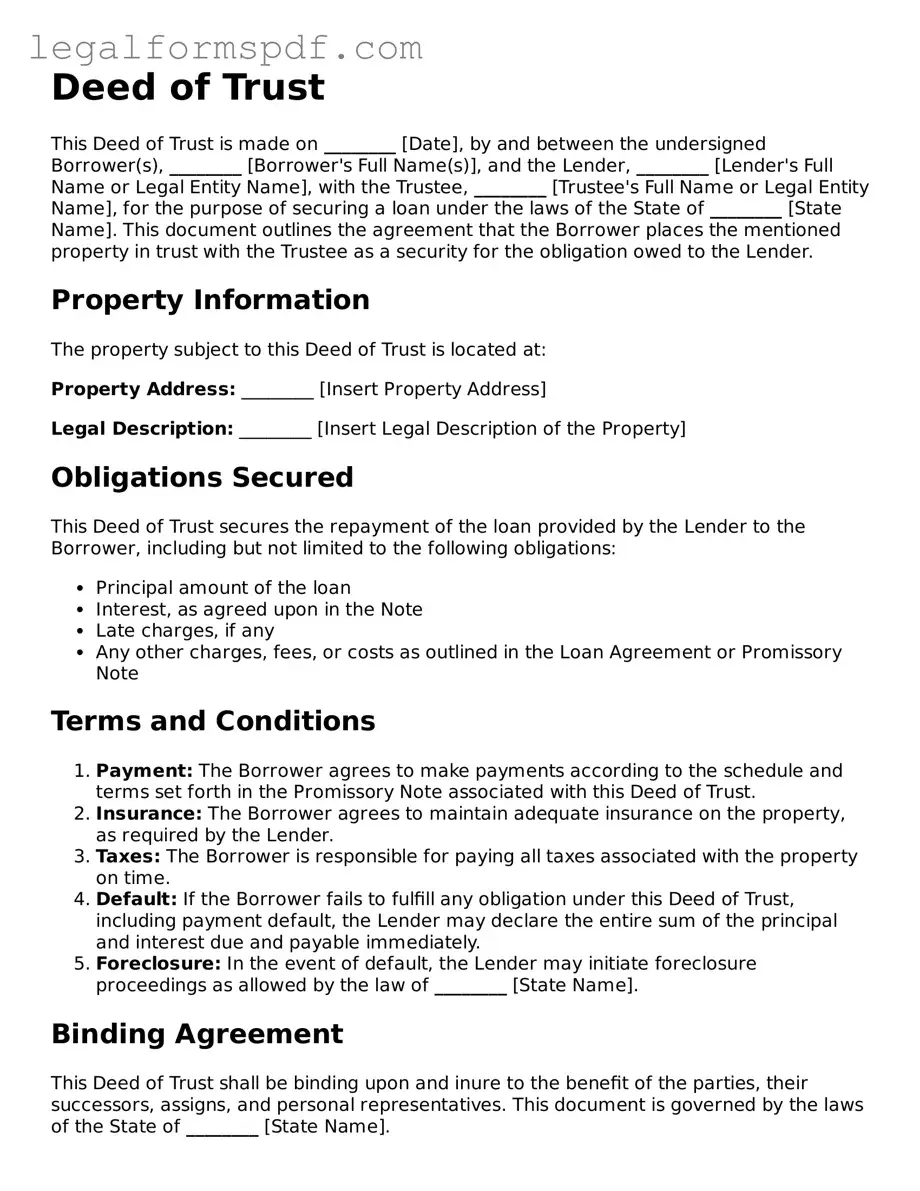Deed of Trust
This Deed of Trust is made on ________ [Date], by and between the undersigned Borrower(s), ________ [Borrower's Full Name(s)], and the Lender, ________ [Lender's Full Name or Legal Entity Name], with the Trustee, ________ [Trustee's Full Name or Legal Entity Name], for the purpose of securing a loan under the laws of the State of ________ [State Name]. This document outlines the agreement that the Borrower places the mentioned property in trust with the Trustee as a security for the obligation owed to the Lender.
Property Information
The property subject to this Deed of Trust is located at:
Property Address: ________ [Insert Property Address]
Legal Description: ________ [Insert Legal Description of the Property]
Obligations Secured
This Deed of Trust secures the repayment of the loan provided by the Lender to the Borrower, including but not limited to the following obligations:
- Principal amount of the loan
- Interest, as agreed upon in the Note
- Late charges, if any
- Any other charges, fees, or costs as outlined in the Loan Agreement or Promissory Note
Terms and Conditions
- Payment: The Borrower agrees to make payments according to the schedule and terms set forth in the Promissory Note associated with this Deed of Trust.
- Insurance: The Borrower agrees to maintain adequate insurance on the property, as required by the Lender.
- Taxes: The Borrower is responsible for paying all taxes associated with the property on time.
- Default: If the Borrower fails to fulfill any obligation under this Deed of Trust, including payment default, the Lender may declare the entire sum of the principal and interest due and payable immediately.
- Foreclosure: In the event of default, the Lender may initiate foreclosure proceedings as allowed by the law of ________ [State Name].
Binding Agreement
This Deed of Trust shall be binding upon and inure to the benefit of the parties, their successors, assigns, and personal representatives. This document is governed by the laws of the State of ________ [State Name].
Signatures
IN WITNESS WHEREOF, the parties have executed this Deed of Trust on the date first above written.
Borrower's Signature: ________ [Signature]
Borrower's Name (Printed): ________ [Name]
Lender's Signature: ________ [Signature]
Lender's Name (Printed): ________ [Name]
Trustee's Signature: ________ [Signature]
Trustee's Name (Printed): ________ [Name]
State of ________ [State Name]
County of ________ [County Name]
This document was acknowledged before me on ________ [Date] by ________ [Names of the individuals acknowledged].
Notary's Signature: ________ [Signature]
Notary's Name (Printed): ________ [Name]
My Commission Expires: ________ [Date]
